The Christmas Cat is coming to town! Posted by hulda on Dec 12, 2013 in Icelandic culture, Icelandic customs, Icelandic history
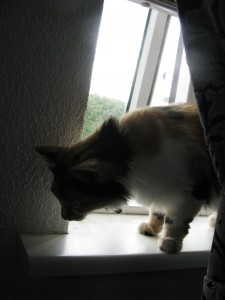 You better watch out, you better not cry… and you better receive at least one item of clothing for Christmas. This is how you’ll live to see the New Year, at least according to an Icelandic tradition.
You better watch out, you better not cry… and you better receive at least one item of clothing for Christmas. This is how you’ll live to see the New Year, at least according to an Icelandic tradition.
As a typical Christmas time scare for children, Urðarkötturinn (= the cliff cat) is actually so frightening that once upon a time telling children horror stories of it was legally prohibited. Even its owner, the troll lady Grýla, pales in comparison – at least Grýla only ate children…
But wait, how can that be any kind of a mitigating factor? The awful thing about Urðarkötturinn is that it preyed on anyone who didn’t receive an item of clothing for Christmas, thus targeting the friends and families of people who were already so badly off that they couldn’t afford that single item of clothing to give. A poem by Jóhannes úr Kötlum, first printed in 1932 in the book Jólin koma (= Christmas is coming), describes the beast as follows:
Jólakötturinn
Þið kannist við jólaköttinn,
– sá köttur var gríðarstór.
Fólk vissi ekki hvaðan hann kom
eða hvert hann fór.
You’ve heard of the Christmas cat,/that cat was monstrously huge./People knew not where he came/or where he went.
Hann glennti upp glyrnurnar sínar,
glóandi báðar tvær.
– Það var ekki heiglum hent
að horfa í þær.
He opened his eyes wide,/they both were glowing./It was not for the cowards/to look into them.
Kamparnir beittir sem broddar,
upp úr bakinu kryppa há,
– og klærnar á loðinni löpp
var ljótt að sjá.
Whiskers sharp as needles,/the tall curve of its bent back,/and claws in the hairy paws/was awful to look upon.
Hann veifaði stélinu sterka,
hann stökk og hann klóraði og blés,
– og var ýmist uppi í dal
eða úti um nes.
He waved his strong tail,/he leaped and he scratched and hissed,/and was either up in the valley/or out in the headland.

Photo by Shannon Kringen.
Hann sveimaði, soltinn og grimmur,
í sárköldum jólasnæ,
og vakti í hjörtunum hroll
á hverjum bæ.
He roamed, famished and savage,/in the ice-cold Christmas snow/and woke fear in everyone’s hearts/in every town.
Ef mjálmað var aumlega úti
var ólukkan samstundir vís
Allir vissu´, að hann veiddi menn
en vildi ekki mýs.
If there was a pitiful meow outside/the bad luck was immediately certain*./Everyone knew that he hunted humans/and did not want mice.
(*optionally: the danger was right at your door)
Hann lagðist á fátæka fólkið,
sem fékk enga nýja spjör
fyrir jólin – og baslaði og bjó
við bágust kjör.
He aimed for the poor people,/who received no new garment/for Christmas – and toiled and lived/in miserable conditions.
Frá því tók hann ætíð í einu
allan þess jólamat,
og át það svo oftast nær sjálft,
ef hann gat.
From them he got his feeding/for his Christmas dinner,/and ate them usually/if he could.
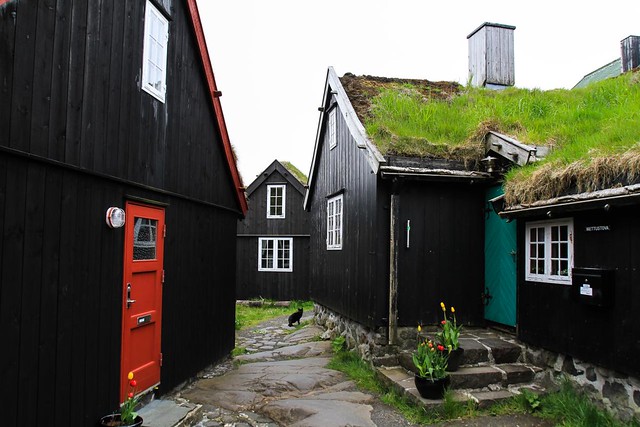
Photo by Ómar Runólfsson.
Þvi var það að konurnar kepptust
við kamba og vefstól og rokk,
og prjónuðu litfagran lepp
eða lítinn sokk.
That was why the women fought/with comb and loom and spinning wheel,/and knitted colourful patches*/or little socks.
(*patches may mean the bottoms meant for traditional Icelandic shoes.)
Því kötturinn mátti ekki koma
og krækja í börnin smá
– Þau urðu að fá sína flík
þeim fullorðnu hjá.
For the cat could not arrive/and eat the little children/they would receive their items/with the grown-ups.
Og er kveikt var á jólakvöldið
og kötturinn gægðist inn,
stóðu börnin bísperrt og rjóð,
með böggulinn sinn.
And when the candles were lit for Christmas eve/and the cat peeped in,/the children stood proud and ruddy/with their parcels.
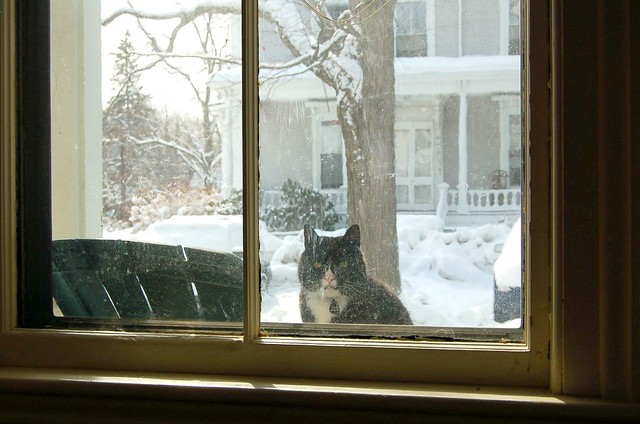
Photo by username ilovebutter.
Sum höfðu fengið svuntu
og sum höfðu fengið skó,
eða eitthvað, sem þótti þarft,
– en það var nóg.
Some had received mittens/and some had received shoes,/or something, that they were in need of/but that was all it took.
Því kisa mátti engan eta,
sem einhverja flíkina hlaut. –
Hún hvæsti þá heldur ljót
og hljóp á braut.
For the cat could not eat anyone,/who some garment received.-/She* hissed then rather awfully/and ran away.
(*the word köttur is masculine, which is why the Urðarköttur is referred to as hann (= he) at first, but kísa (= kitty) is feminine, which means that the pronoun also changes; neither tells you the real gender of the cat)
Hvort enn er hún til veit ég ekki,
– en aum yrði hennar för,
ef allir eignuðust næst
einhverja spjör.
Whether she still exists I do not know,/- but her travel would become miserable,/if everyone was given/some item of clothing.
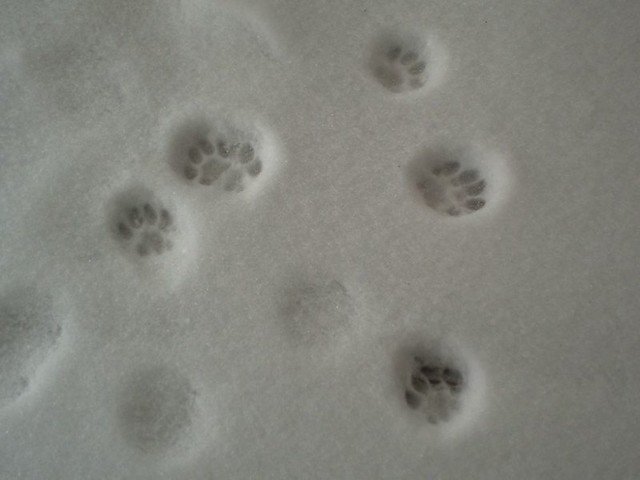
Photo by Angela Shupe.
Þið hafið nú kannski í huga
að hjálpa, ef þörf verður á.
– Máske enn finnist einhver börn
sem ekkert fá.
You may have it now in your mind/to help, when it’s needed./- Maybe there still are children/that receive nothing at all.
Máske, að leitin að þeim sem líða
af ljós-skorti heims um ból,
gefi ykkur góðan dag
og gleðileg jól.
Maybe the search of those who live/in dark homes*,/gives you a good day/and a merry Christmas**.
(*ljós-skortur means lack of light, the houses of people who cannot afford candles/oil to light them)
(**the last two lines imply that the real Christmas spirit is in selfless acts and helping others, not that people should help the poor to gain themselves a better mood)
You can listen to Ragnheiður Gröndal sing this poem here. Keep an eye (ear?) out on how some words lose their endings and/or are tied together!
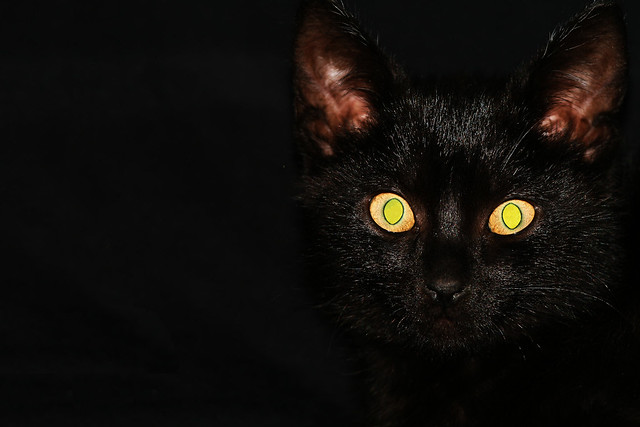
Photo by Daníel Örn.
DISCLAIMER: none of the cats featured in this entry are Urðarkötturinn. You can tell by the fact that they’re all really cute, lovely creatures, which the Christmas Cat definitely is not.
Additionally the poem is a great example of the traditional Icelandic metre that’s almost disappeared from use! Signs of its comeback have been few and far between, but at least one popular band Skálöld writes their songs using it. For a Skálmöld example check the entry Loki’s children and see if you can spot the following rules:
* Two stressed syllables alliterate on odd-numbered lines: these are called stuðlar
* The next line’s first stressed word alliterates with the aforementioned two: this is called höfuðstafur
* All vowels alliterate with each other, the letter J can alliterate with some vowels
* Other consonants only alliterate with exactly the same consonant
Icelandic Christmas is full of monsters of all kinds, most of which feed on humans. Lucky us, some of them can be avoided with a little bit of effort. So why not join the Icelandic Christmas mood and save your friends and family from an awful death this year? All you need to do is to give them one item of clothing (and make sure they’re likewise informed so that you might be saved as well)!

Build vocabulary, practice pronunciation, and more with Transparent Language Online. Available anytime, anywhere, on any device.
About the Author: hulda
Hi, I'm Hulda, originally Finnish but now living in the suburbs of Reykjavík. I'm here to help you in any way I can if you're considering learning Icelandic. Nice to meet you!



